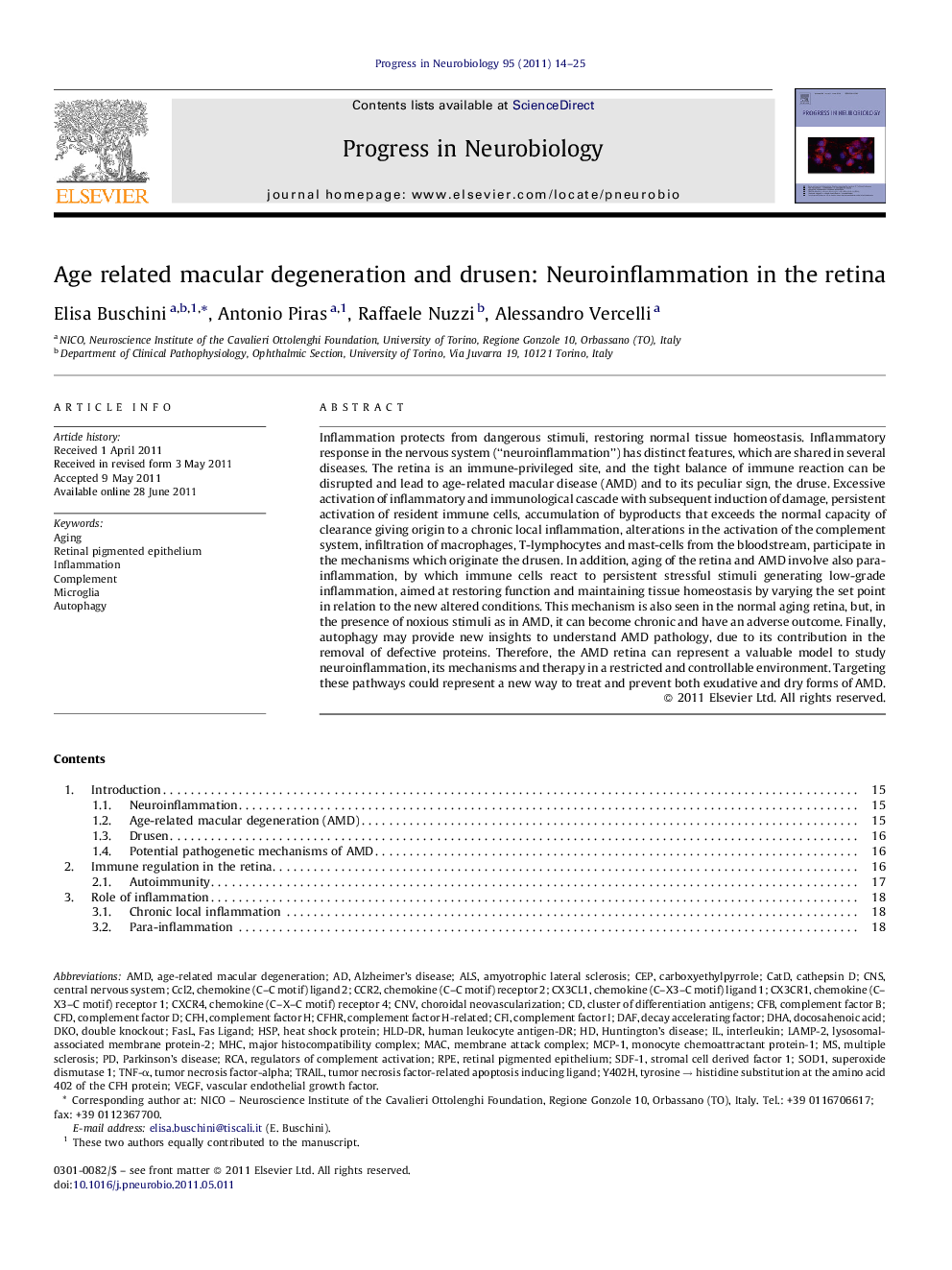| Article ID | Journal | Published Year | Pages | File Type |
|---|---|---|---|---|
| 4353645 | Progress in Neurobiology | 2011 | 12 Pages |
Inflammation protects from dangerous stimuli, restoring normal tissue homeostasis. Inflammatory response in the nervous system (“neuroinflammation”) has distinct features, which are shared in several diseases. The retina is an immune-privileged site, and the tight balance of immune reaction can be disrupted and lead to age-related macular disease (AMD) and to its peculiar sign, the druse. Excessive activation of inflammatory and immunological cascade with subsequent induction of damage, persistent activation of resident immune cells, accumulation of byproducts that exceeds the normal capacity of clearance giving origin to a chronic local inflammation, alterations in the activation of the complement system, infiltration of macrophages, T-lymphocytes and mast-cells from the bloodstream, participate in the mechanisms which originate the drusen. In addition, aging of the retina and AMD involve also para-inflammation, by which immune cells react to persistent stressful stimuli generating low-grade inflammation, aimed at restoring function and maintaining tissue homeostasis by varying the set point in relation to the new altered conditions. This mechanism is also seen in the normal aging retina, but, in the presence of noxious stimuli as in AMD, it can become chronic and have an adverse outcome. Finally, autophagy may provide new insights to understand AMD pathology, due to its contribution in the removal of defective proteins. Therefore, the AMD retina can represent a valuable model to study neuroinflammation, its mechanisms and therapy in a restricted and controllable environment. Targeting these pathways could represent a new way to treat and prevent both exudative and dry forms of AMD.
► AMD is a neurodegenerative disease. ► Accumulation of waste material in the drusen is the clinical hallmark. ► Drusen composition suggests a pathogenetic role for inflammation and immune system. ► An imbalance in the local and systemic response to noxious stimuli leads to damage. ► Autophagy is possibly involved.
